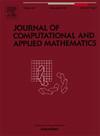修正4/2随机波动率模型下的美式看跌期权估值
IF 2.6
2区 数学
Q1 MATHEMATICS, APPLIED
Journal of Computational and Applied Mathematics
Pub Date : 2025-09-26
DOI:10.1016/j.cam.2025.117101
引用次数: 0
摘要
本文基于包含多尺度双均值回归(DMR)波动率的4/2随机波动率模型,研究美式看跌期权的估值问题。将期权价格问题转化为具有自由边界的偏微分方程问题,进而转化为具有自由边界的期权价格渐近展开式的几项偏微分方程问题。将近似美式看跌期权价格分解为相应的欧式看跌期权价格和早期行权溢价之和。所选择的4/2随机波动率修正允许从相应的欧洲期权的布莱克-斯科尔斯价格开始逐步接近期权价格,使其更容易近似美国看跌期权的价格。利用最小二乘蒙特卡罗模拟法检验了所得近似期权价格和自由边界的准确性,并研究了波动率的赫斯顿因子和3/2因子对期权价格和自由边界的影响。我们根据实际市场数据校准我们的模型,并将其与广泛使用的赫斯顿模型和3/2模型进行基准测试。我们还进行了敏感性分析,以显示模型参数的微小变化如何影响美国看跌期权溢价和早期行使边界,并讨论了当3/2项消失或波动率变得确定性时的限制情景。此外,还给出了两个具体结果。导出了美式看跌期权接近到期时的近似期权价格和自由边界的半解析解。本文还研究了无到期日美式看跌期权的定价问题,得到了近似期权价格和自由边界的封闭解析公式。本文章由计算机程序翻译,如有差异,请以英文原文为准。
Valuation of American put options under a modified 4/2 stochastic volatility model
In this paper, we study the valuation of American put options based on the 4/2 stochastic volatility model that incorporates multiscale double mean-reverting (DMR) volatility. The option price problem is transformed into a partial differential equation (PDE) problem with free boundary, which in turn leads to PDE problems for a few terms of asymptotic expansions of the option price and free boundary. The approximate American put price is decomposed into the sum of the corresponding European put price and the early exercise premium. The chosen modification of the 4/2 stochastic volatility allows for a step-by-step approach to the option price starting from the Black–Scholes price of the corresponding European option, making it easier to approximate the price of an American put option. We check the accuracy of the resultant approximate option price and free boundary by using the least squares Monte Carlo simulation method and investigate the impact of the Heston and 3/2 factors of the volatility on the option price and free boundary. We calibrate our model to real market data and benchmark it against the widely used Heston model and the 3/2 model. We also conduct a sensitivity analysis to show how small changes in model parameters influence the American put option premium and early exercise boundary, and discuss limiting scenarios when the 3/2 term vanishes or volatility becomes deterministic. In addition, two specific results are provided. We derive a semi-analytic solution for the approximate option price and free boundary when an American put option is near expiration. We also study the pricing of an American put option without an expiration date and obtain a closed-form analytic formula for the approximate option price and free boundary.
求助全文
通过发布文献求助,成功后即可免费获取论文全文。
去求助
来源期刊
CiteScore
5.40
自引率
4.20%
发文量
437
审稿时长
3.0 months
期刊介绍:
The Journal of Computational and Applied Mathematics publishes original papers of high scientific value in all areas of computational and applied mathematics. The main interest of the Journal is in papers that describe and analyze new computational techniques for solving scientific or engineering problems. Also the improved analysis, including the effectiveness and applicability, of existing methods and algorithms is of importance. The computational efficiency (e.g. the convergence, stability, accuracy, ...) should be proved and illustrated by nontrivial numerical examples. Papers describing only variants of existing methods, without adding significant new computational properties are not of interest.
The audience consists of: applied mathematicians, numerical analysts, computational scientists and engineers.

 求助内容:
求助内容: 应助结果提醒方式:
应助结果提醒方式:


